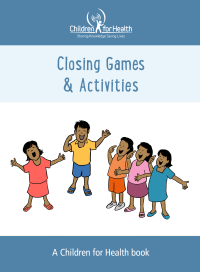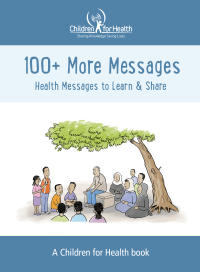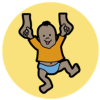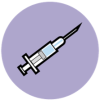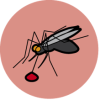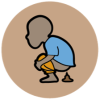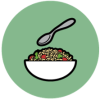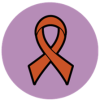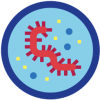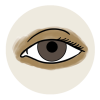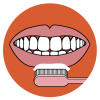Preventing Anaemia

Prevent anaemia with the help of children and adolescents! We have created these messages to try to do something practical in response to finding out the dreadful news that 50% of India’s adolescents are anaemic.
As with all Children for Health messages, these messages on preventing anaemia are designed to help children become agents of change.
Read our Top Ten Messages on Preventing Anaemia for children to learn and share to the right. Scroll down to see ideas on what children can do to understand, find out more, take action and reflect on this topic.
Use the links below to browse our FREE resources to help children learn more, share their knowledge and become agents of change.
Messages on
Preventing Anaemia
- Anaemia is caused by a shortage of iron (haemoglobin) in the blood. It causes weakness, fatigue, a pale face & ears & brittle nails.
- Malaria, intestinal worm infections, HIV/AIDS and TB and other infections can lead to a loss of iron in the blood and then anaemia.
- People with anaemia lack healthy blood cells to carry oxygen around the body. This leads to weakness in the body (physical) and mind (cognitive), and even death.
- Anaemia is especially serious for babies, young children, pregnant women and adolescents.
- A finger stick test at a health clinic can quickly test for anaemia.
- Prevent anaemia by getting iron from food each day. Iron supplements can be used in emergency but can cause stomach-aches and constipation.
- Breastfeeding prevents anaemia & gives babies iron stores for many months even after the introduction of solid foods.
- Cow’s milk is low in iron and too much can even cause loss of iron. This is especially serious for babies & young children.
- Eat iron rich food like red meat, poultry, fish, cereals, dark green leafy veg, eggs, nuts & seeds, dried fruit, peas, lentils plus foods with vitamin C (helps us absorb iron).
- Potato skins are rich in nutrients and contain five times the amount of iron as the flesh. Leave skins on fries, jackets, baked, roasted and boiled potatoes.
- Mix iron rich grains like amaranth, quinoa & barley grains with wheat flour when you cook.
- Limit caffeine, aerated drinks, alcohol and sugary drinks which reduce absorption of iron in the body.
Children can learn, collect & share these messages!
While teaching these messages, encourage children to…
MAKE their own Preventing Anaemia Messages using their own words in their own language!
LEARN these messages so they never forget them!
ADD these messages to their collection!
SHARE these messages with other children and their families!
If your class or group is struggling to stay connected and engaged, we have loads of ideas for ideas to help them! Have a look at Closing Games & Activities.
What can children make?
A POSTER showing iron rich foods that they should each every day.
WRITE a play about someone who starts to feel unwell and goes on to be diagnosed with anaemia. What happens next? What treatments do they try? Do they work?
What can children do?
WATCH loved ones for symptoms and encourage them to visit a health worker if they stop any signs.
FIND out what iron rich foods could be added to their everyday diet at home and ask parents for them.
What can children ask?
ASK a health worker or a science teacher to tell them more about blood is made of and how anaemia impacts people.
SURVEY their family members to find out if anyone they know has anaemia. Ask how they were diagnosed and treated. Ask how they felt before and after treatment.
Download these free materials now to help children learn and share these
essential health messages. See our free resource section for more!



